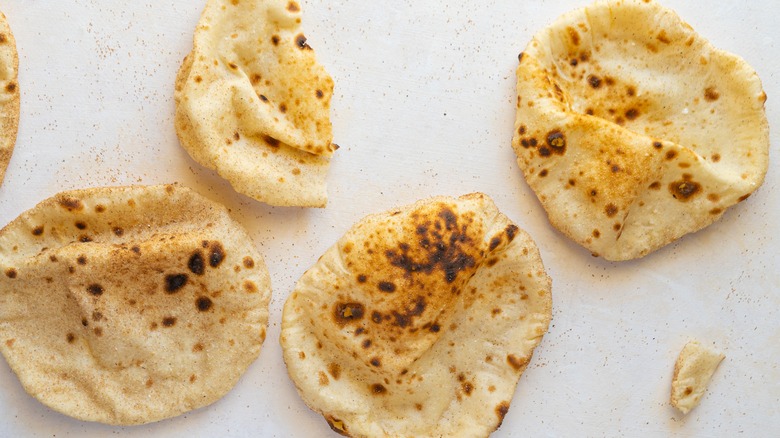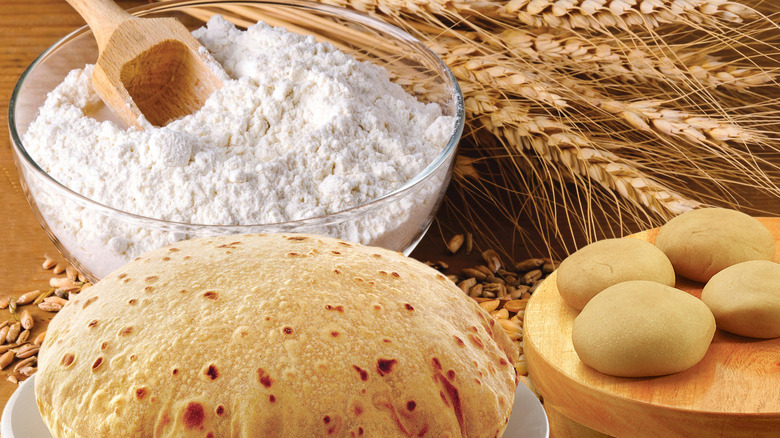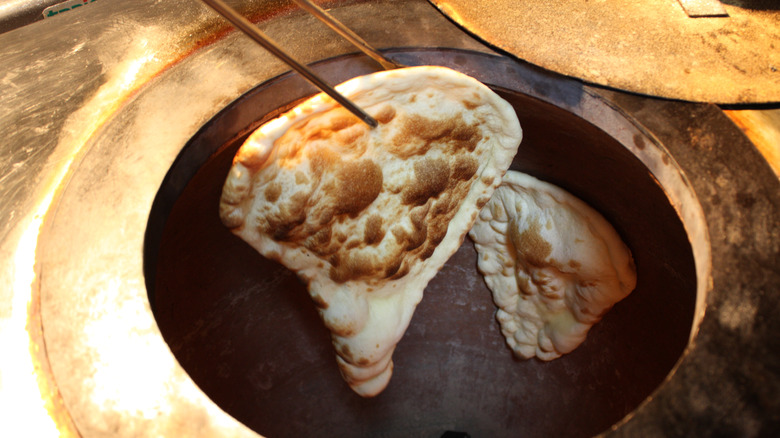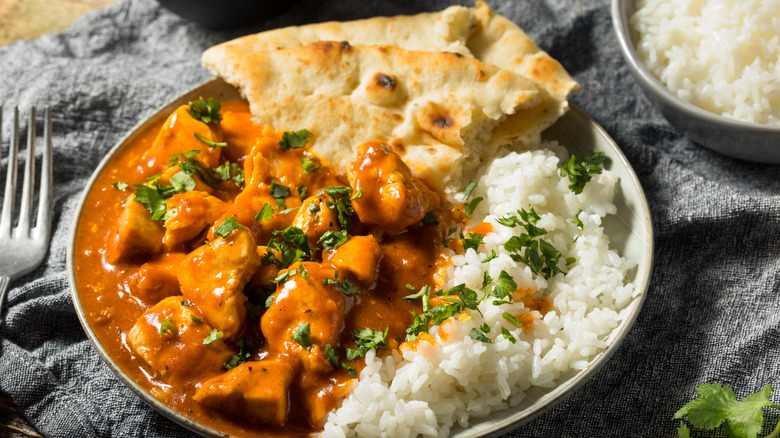What Exactly Is Traditional Flatbread And Where Did It Originate?
What do tortillas, naan, and pita bread have in common? If you said they are all something that's delicious as well as wildly popular, you wouldn't be wrong. While those things are true, the other truth is that they're all different types of flatbreads. This versatile food dates all the way back to ancient Egypt, but variations can be found practically all over the globe. Although flatbreads span different regions and cultures, they all share the basic traits of being a bread that's baked into a flat shape. And that distinction comes down to the way they're made.
For something to be classified as a traditional flatbread, it means it is an unleavened bread that's made without yeast. And traditional flatbread is made with just a few ingredients, usually coming together by combining flour, water, and salt. But there's more to this bread's popularity than just the ease with which it can be made. Traditional flatbread has a rich history, tastes delicious, is easy to make, and is versatile.
The history of traditional flatbread
Since so many cultures have their own version of flatbread, it might seem tough to decipher where the first flatbread was made. But, according to discoveries made at historic sites, flatbread's origin can be traced back to ancient Egypt, with the best estimate that the first flatbread was made about 30,000 years ago. Although this is the region where flatbread first appeared, other traditional flatbreads are found in different countries all over the world; even though the finished result may vary a bit from culture to culture, the process of making it and the way it's consumed are largely the same.
Flatbreads were typically made from a grain being ground down. In early human history, this was accomplished by using two stones to crush the grain until it became a flour. The ground grain was combined with water and salt, then mixed until a dough formed. Just like in modern times, the dough was baked to make the flatbread — but before the invention of clay, coal, or electric-powered ovens, flatbread was cooked on a flat rock that was hot from the sun.
Ways to cook flatbread
Although the ingredients and basic method of making traditional flatbread hasn't changed much in the thousands of years since its creation, the way flatbread is cooked today is much different. Thanks to modern conveniences like electricity, flatbread is no longer cooked outdoors on a flat rock. Most flatbreads are baked in an oven, although some varieties can be made in different vessels, while others aren't baked and are instead cooked on a stove top, such as when flour or corn tortillas are cooked in a hot skillet or flat griddle.
Leavened flatbreads are also cooked this way. Pita bread can be made in an oven or on the stove top, although it tends to get a fluffier texture when it's baked in the oven. You don't need a lot of special equipment to make pitas: they can be cooked in a cast-iron skillet either on the stovetop or in the oven. Naan, on the other hand, is traditionally baked inside a cylindrical shaped outdoor clay oven known as a tandoor. The tandoor is an oven that originated in India and Pakistan, and has been used for over 5,000 years. Food is placed into this oven via a hole in the top of the tandoor and gets cooked over hot coals that are at the bottom. Tandoors cook at a much higher heat than traditional ovens, with temperatures reaching 900 degrees Fahrenheit.
What to pair with flatbread
The way you cook with flatbread depends on the type you're using. Soft shell tortillas pair perfectly with tacos, burritos, and quesadillas. Pita bread can be served either crispy or soft with dips like hummus or Greek tzatziki, and soft pita bread is great for wrapping around gyros or just served on its own, warm with garlic and butter.
If you choose a leavened flatbread, such as naan, its shape and fluffier consistency makes it perfect for tearing into chunks to use in place of utensils such as a fork or a spoon. Much of traditional Indian cuisine contains sauces or gravies that are meant to be absorbed by scooping the liquid with the torn pieces of flatbread, so it's ideal for serving with masala dishes or curries. Naan can also be eaten like a pita bread or similar to a tortilla shell when it is served with kabobs, since the grilled meat and vegetables can be wrapped in the soft, foldable bread. No matter which type of flatbread you prefer, you have a delicious option to fill with protein or vegetables or to use to sop up your favorite sauce or dip.



